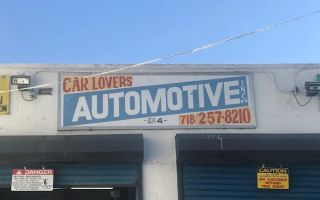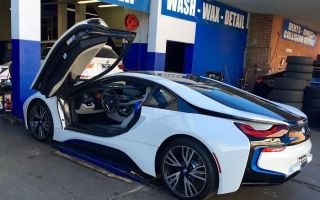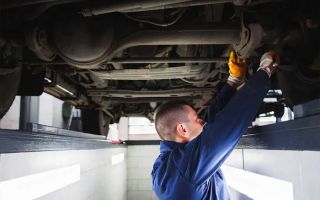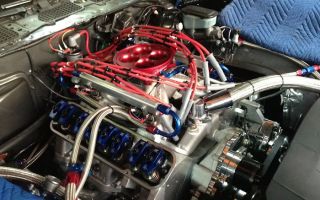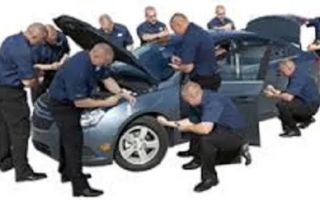1. Jumpstart vs Battery Replacement: What’s the Real Difference?
When your car won’t start, it’s often due to a problem with the battery. But not all battery issues are the same. In some cases, a simple jumpstart might do the trick. In other situations, you might need a full battery replacement. Understanding the difference between a jumpstart and a battery replacement can save you time and money, and help you make the right choice when your car fails to start.
2. When You Need a Jumpstart
A jumpstart is typically the first solution when your car won’t start. This is because many car issues are related to the battery losing its charge. If the battery is just drained and the car isn’t starting because it doesn't have enough power, a jumpstart can give it the quick boost it needs. Here’s when a jumpstart is usually sufficient:
- Drained Battery: If you left your headlights on or the car wasn’t driven for a long time, your battery may be drained, but not necessarily dead.
- Cold Weather: In colder temperatures, car batteries can lose their charge faster, making a jumpstart the perfect solution.
- Electronics Overload: A lot of electrical devices like GPS systems or music players can drain your battery if left on when the car is off.
A jumpstart is a temporary fix—it gives your car the immediate power it needs to get going, but it doesn’t address any deeper battery issues.
3. When You Need a Battery Replacement
On the other hand, if your car won’t start even after multiple attempts to jump it, or if your battery is old and showing signs of wear, it may be time for a battery replacement. Here’s how you can tell:
- Battery Age: Car batteries typically last 3-5 years. If your battery is near the end of its lifespan, it may need to be replaced.
- Corrosion or Leaking: If you notice corrosion on the battery terminals or see any signs of leakage, a replacement is necessary.
- Repeated Jumpstarts: If you’ve needed multiple jumpstarts recently, your battery is likely no longer holding a charge properly and should be replaced.
Battery replacements involve removing the old battery and installing a new one. It’s more expensive than a jumpstart, but it’s necessary when your battery is no longer functioning efficiently. Regular maintenance and inspections can help you identify when a replacement is needed before your battery completely dies.
4. How to Handle a Jumpstart or Battery Replacement
If you find yourself in a situation where your car won’t start, you’ll need to decide whether a jumpstart or a battery replacement is necessary. Here’s a simple guide:
- Step 1: Check the Battery: Inspect the battery for visible signs of corrosion or damage. If you spot corrosion, cleaning the terminals may help, but if the battery is old or leaking, you’ll need a replacement.
- Step 2: Try Jumpstarting: If the battery looks fine but the car won’t start, try jumpstarting it. You can use jumper cables and another car or a portable jumpstarter to provide a boost.
- Step 3: Call for Help: If jumpstarting doesn’t work or you’re unsure whether the battery needs to be replaced, call a professional. Towing services like Rescue & Towing can assist with both jumpstarting your car and replacing the battery on-site.
Remember, if you’re not comfortable with jumpstarting your car or replacing the battery yourself, it’s best to leave it to the professionals to avoid damaging your vehicle.
5. Real-Life Case Study: A Jumpstart vs Battery Replacement Story
Meet John, a commuter who was running late for work one chilly morning. His car wouldn’t start, so he immediately called a towing service for a jumpstart. The mechanic arrived quickly and jumpstarted his car with a portable booster. After running for a while, John’s car stalled again. The mechanic explained that the battery was over five years old and needed replacing. After a quick battery replacement, John’s car started running smoothly again.
This case highlights the importance of understanding when a jumpstart will suffice and when it’s time for a battery replacement. If John had waited too long to replace his battery, he could have faced more severe issues on the road.
6. Finding the Right Towing Service for Jumpstarts and Battery Replacements
If you’re unsure whether you need a jumpstart or a full battery replacement, contacting a professional towing service is a smart choice. When choosing a service provider, look for the following:
- 24/7 Availability: Car trouble can happen at any time, so choose a towing service that operates around the clock.
- On-Site Battery Replacement: Some towing companies, like Rescue & Towing, offer both jumpstart services and the ability to replace your car battery right on the spot, saving you a trip to the mechanic.
- Reputation: Check reviews to ensure you’re working with a reputable service that offers fast response times and professional service.
Having the right towing service on hand can save you time and stress when you encounter battery issues. Be sure to check your car’s warranty to see if these services are included in your coverage, or purchase a roadside assistance plan for extra peace of mind.


